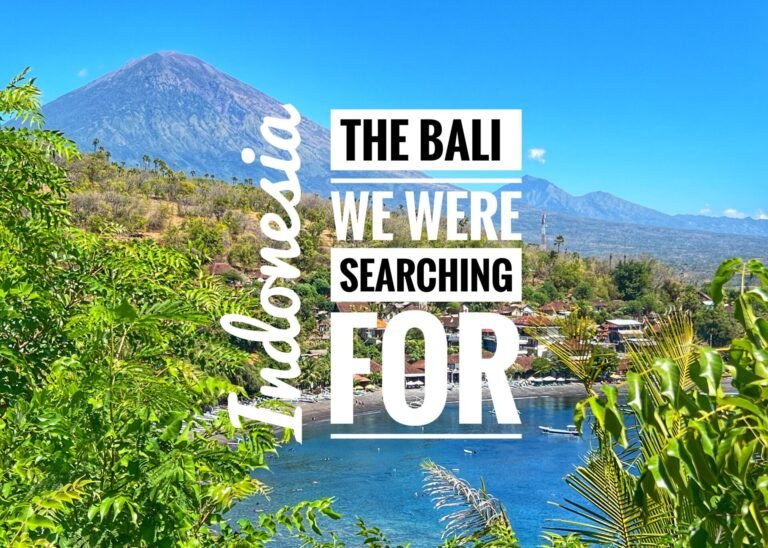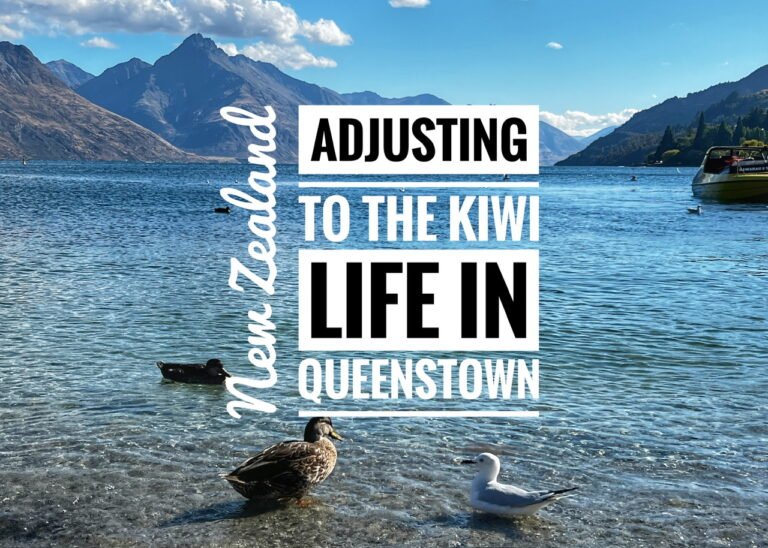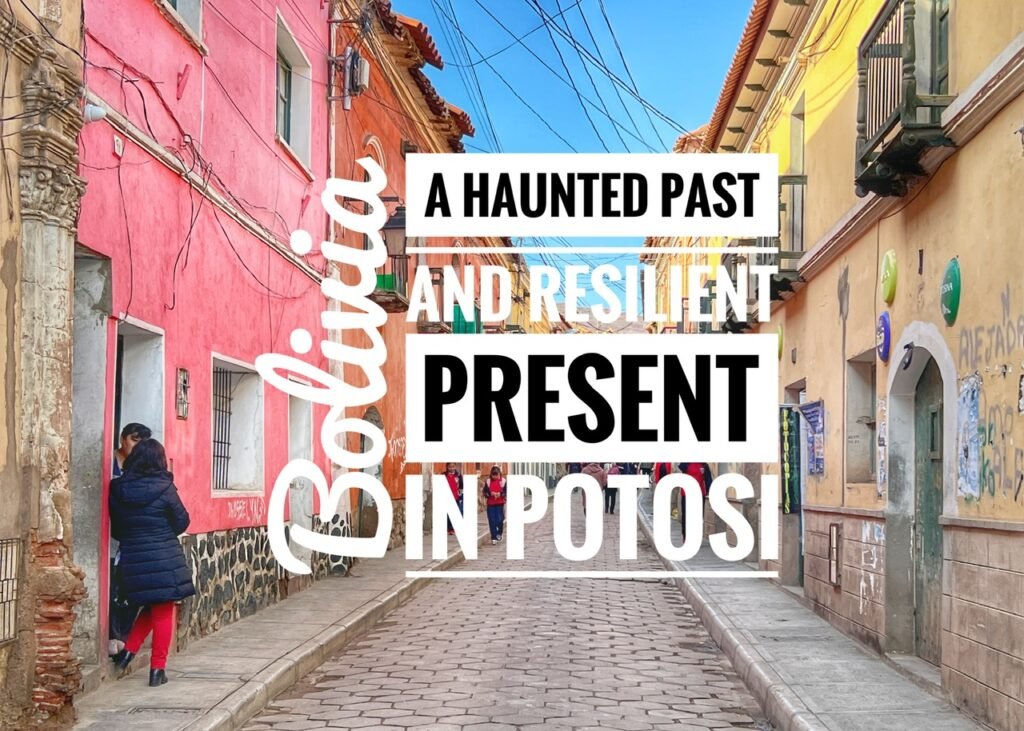
Known as the “Silver City,” founded in 1545, Potosí surged to distinction in the 16th century during the Spanish colonial era when substantial silver deposits were discovered inside its prominent extinct volcano called Cerro Rico. The city, one of the highest in elevation in the world, rapidly became one of the wealthiest and most influential in the world. However, after hundreds of years of being raped of its riches, it is heartbreakingly now one of the poorest. The silver extracted from these mines played a crucial role in funding the Spanish empire. We’ll get to that in a minute. First we had to get to the city itself.
Getting There: Sucre—>Potosi

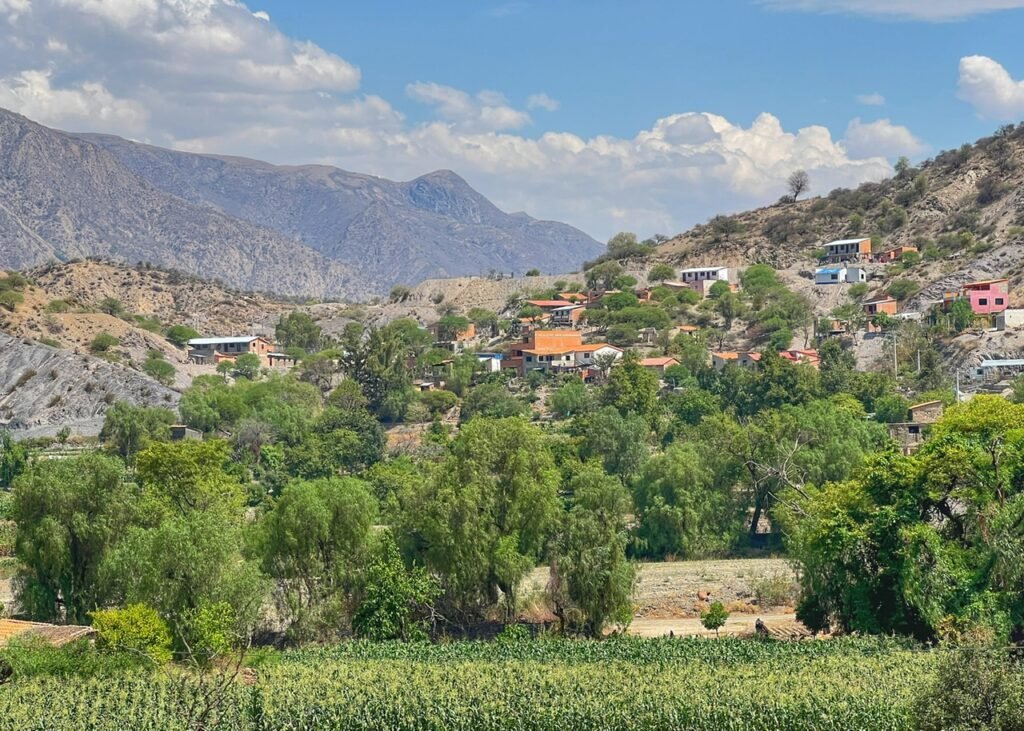

From Sucre, we grabbed a (full-sized, not fun-sized) bus at the main station ($3.25/each) to begin our 3.5-hour ascent up the Bolivian Andes to the second highest city in the world at an elevation of 4,090 m (13,419 ft). (FYI, the first highest, El Alto, is also in Bolivia.)

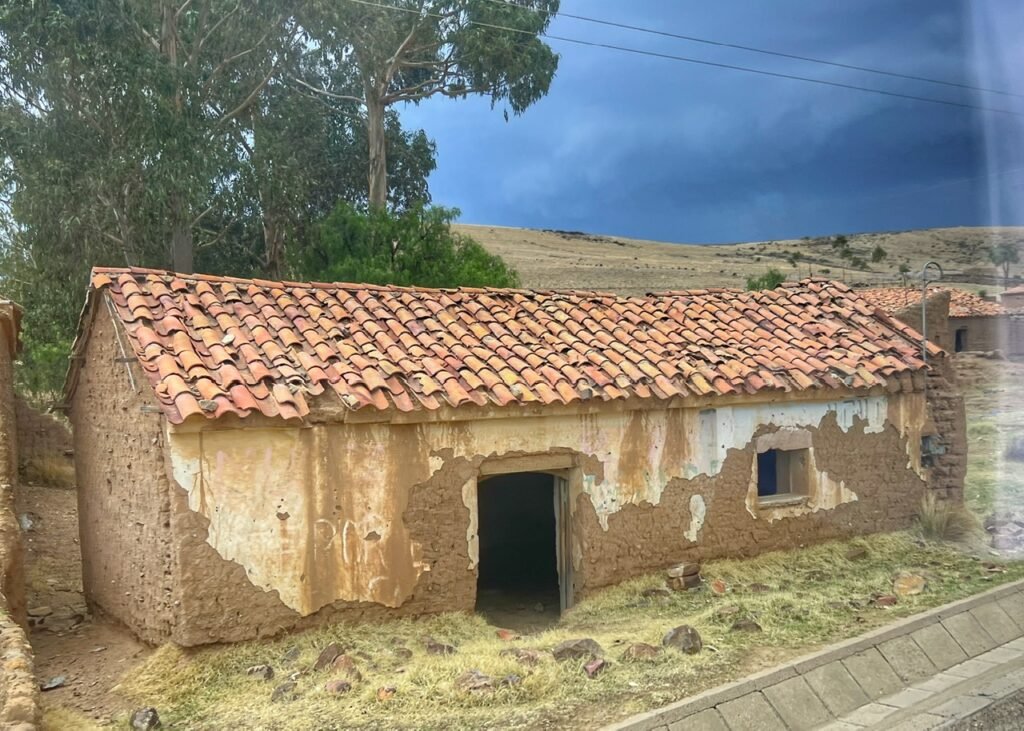
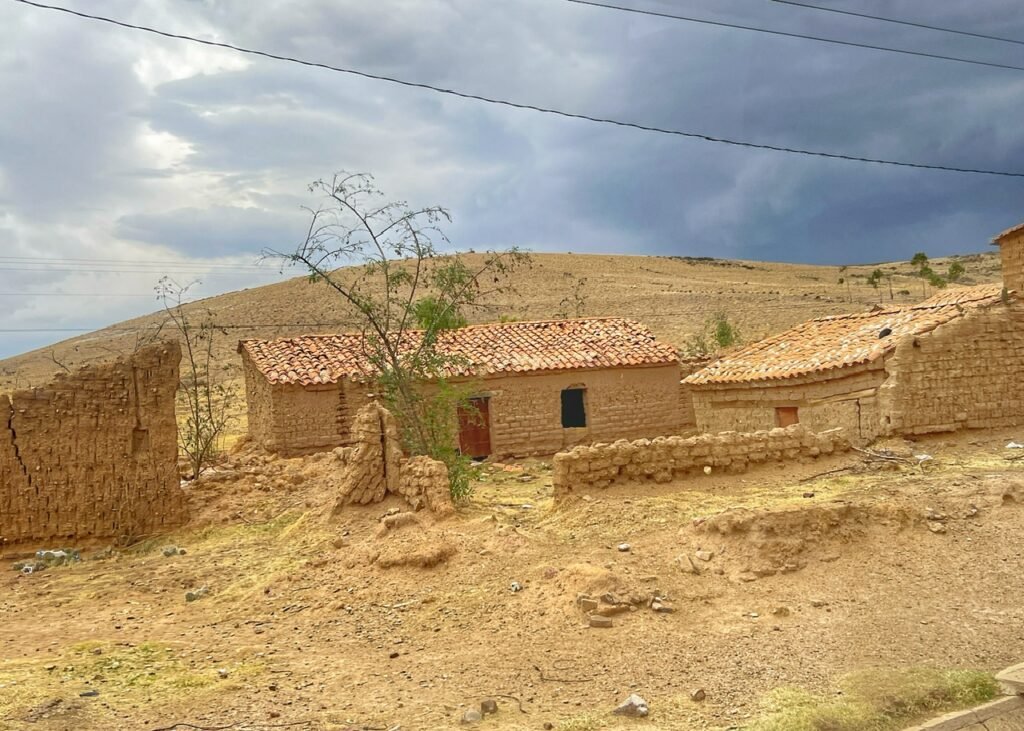
Along the way, we were met with some surprisingly decent roads, rolling mountains, traditional mud brick houses, alluring views and a LOT of very parched and dry land. There’s a reason the Bolivians are currently doing rain dances so we were also very happy when in rained for about 10 minutes in one very small section.
Cerro Rico: “The Mountain that Eats Men”
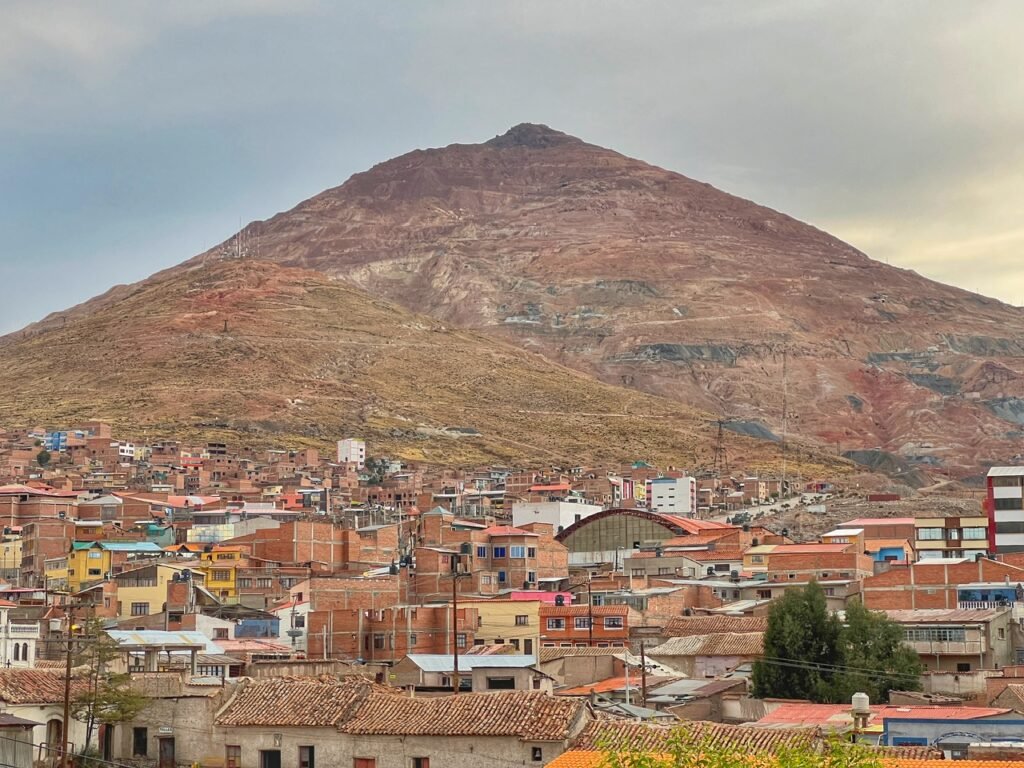
Today, 16,000+ men, and boys, still work in the insanely dangerous and horrific environment known as “The Mountain that Eats Men” extracting tin, zinc and lead. Tourists crazily have the opportunity to visit inside the working mines, but for many reasons we chose to forgo this opportunity, due to health, safety and ethical reasons. During the first 300 years, 8 million indigenous Bolivians and African slaves died. They often worked in shifts of up to four months, meaning they slept, ate and drank in this appalling atmosphere.
Today, although not enslaved, they continue to die..from accidents and disease, but mostly from Silicosis which eats their lungs from the inside out and typically kills them in within 10-15 years of when they start working in the mines.
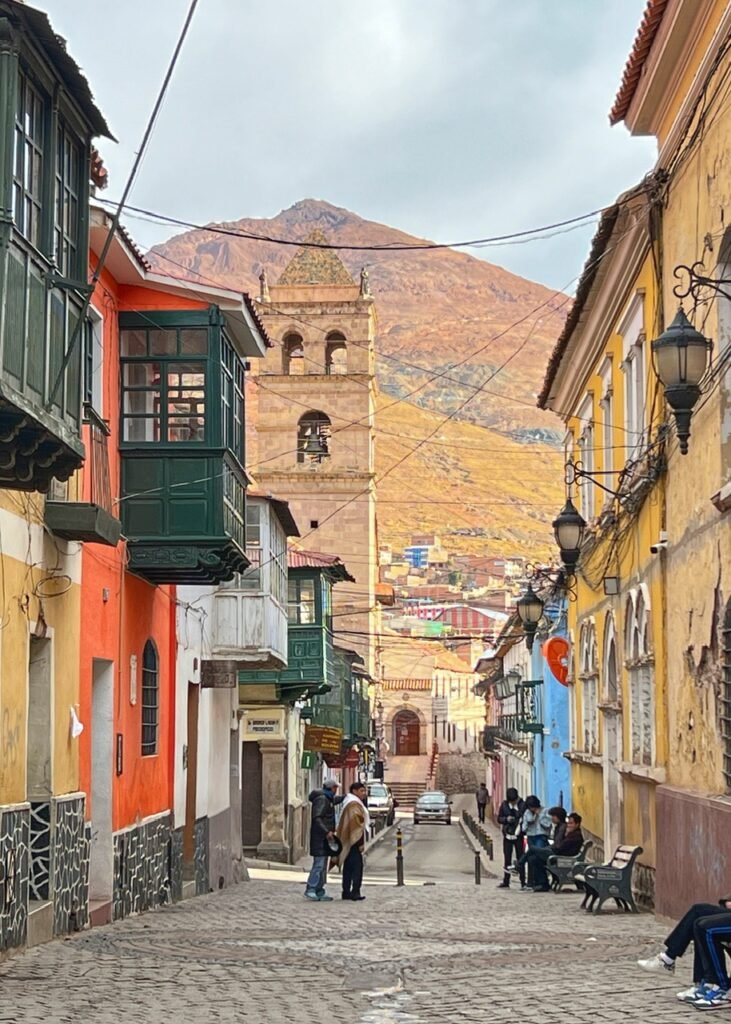
According to a recent NPR article, “the miners toil here much like their ancestors did, using picks, hammers, shovels and brute strength. Men and boys — sons of the miners — haul rocks to the surface on their backs. There are rail cars, but they are the old iron ones introduced to mining in the 19th century. There’s no lighting aside from workers’ headlamps, and no piped-in oxygen or safety regulations.”
Today the mountain is like a slab of Swiss Cheese, pockmarked and hollowed, creating dangerous possibilities of collapse. There are 600 mines, most of them abandoned, and about 60 miles of shafts. Uhhh…still wondering why we didn’t go?!
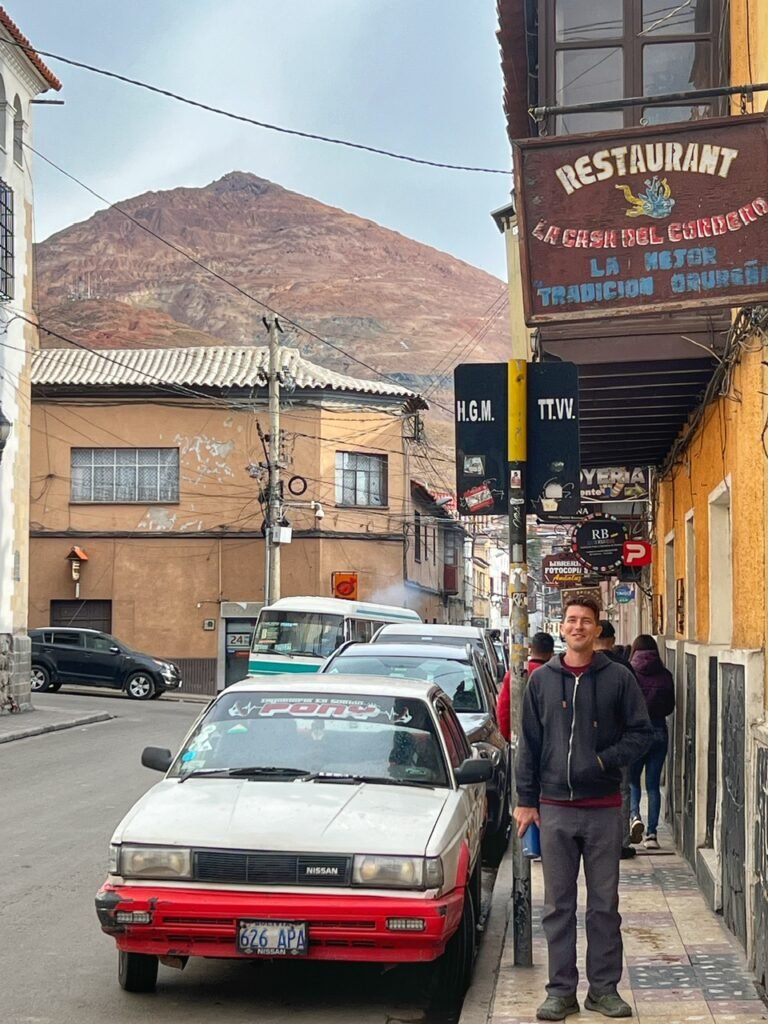
As mentioned, Cerro Rico is an extinct volcano that developed in the Miocene along a belt of tin and silver. The mountain later eroded, exposing a core that remained riddled with veins of silver. Relatively easy access to these veins prompted the rapid growth of mining. (NASA)
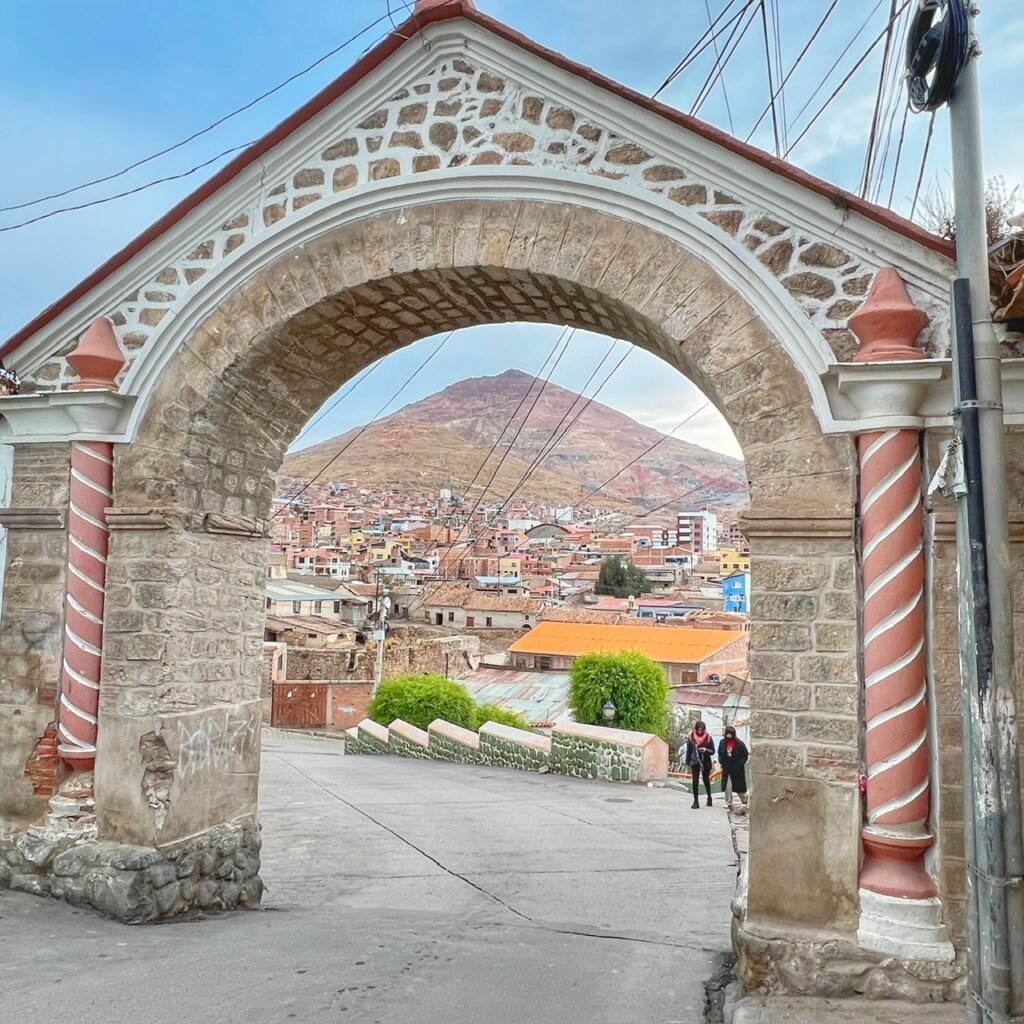
The freestanding arch, which dates from the eighteenth century, served to mark the end of the Spanish section of Potosi, and point travellers in the direction of the ports on the Pacific Ocean.
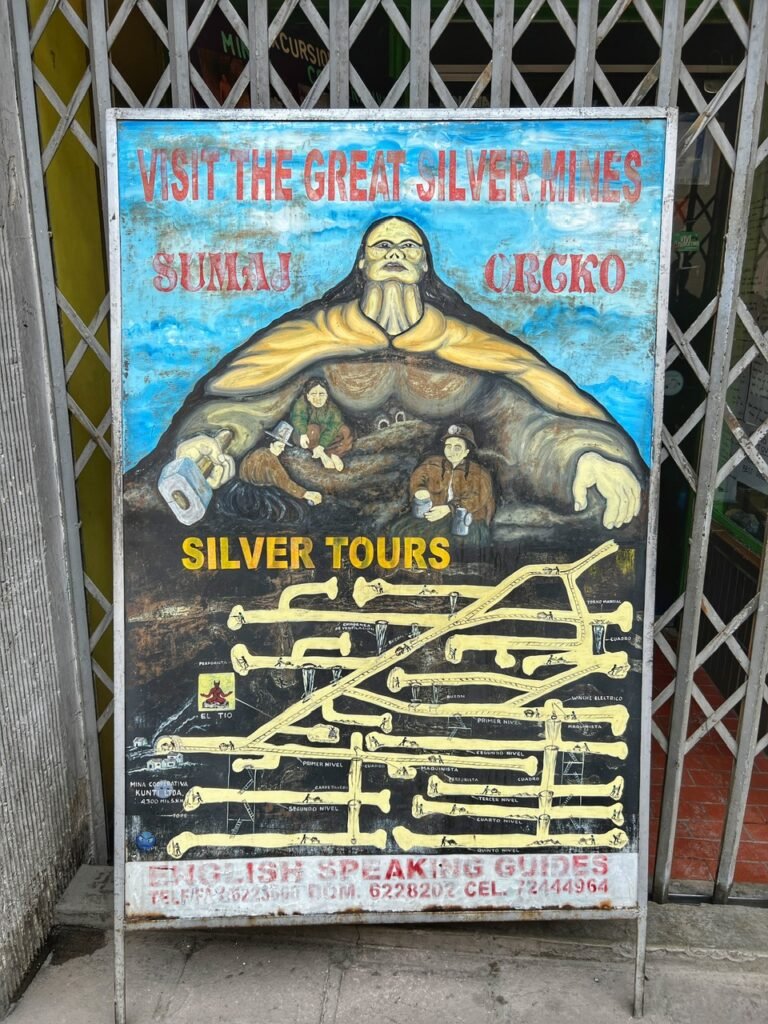
A map of the mine according to a tour company. When you head into the mine, you are entering at your own risk. There is likely to be hazardous dust, dynamite and a very claustrophobic environment. Tourists are encouraged to bring gifts like coca leaves, soda and water to the miners, who go on doing their work as normal in the face of tourists, but often feign some happiness with these gifts. Otherwise, the miners do not eat during their 10 hour shift.

It’s one of the only places in the world where tourists can enter such a dangerous working mine and see firsthand the horrors that these people endure. Yet, do we have any regrets for not going inside? Not one.

And we truly hope that one day these people no longer have to succumb to such shackles.
Exploring Potosí
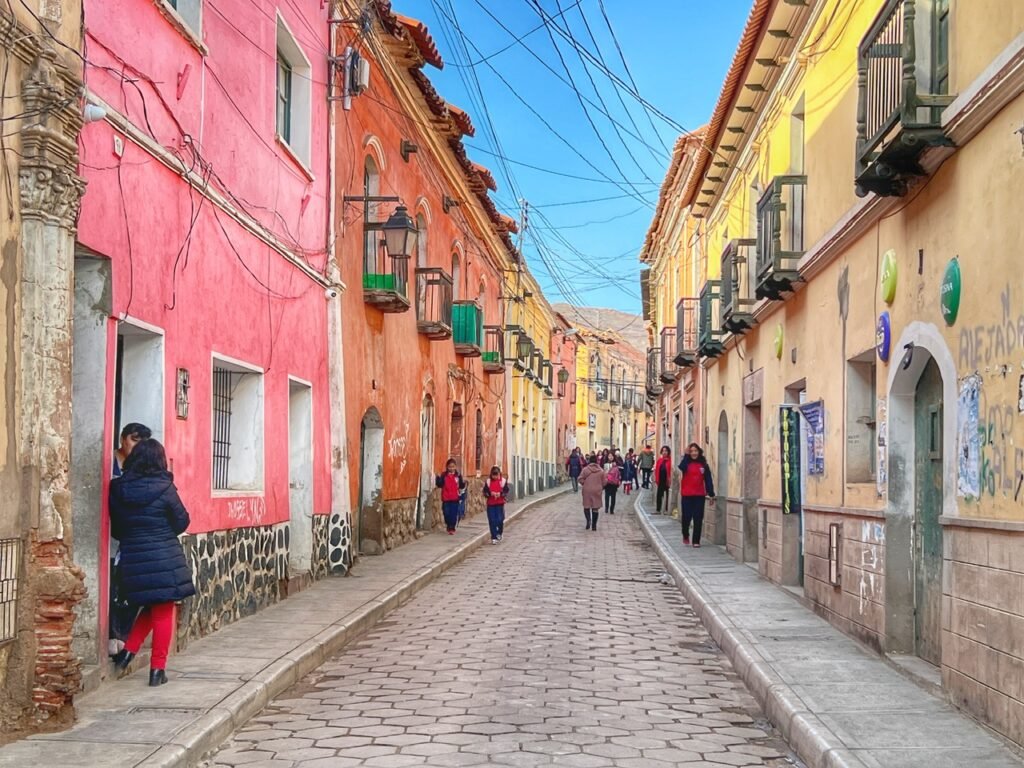
After deciding not to do the mine tour, we actually almost skipped the UNESCO World Heritage site of Potosí, but were really glad we went. Why? For those seeking an authentic and less touristy experience, like us, Potosí is an ideal choice. Plus, its center is far more charming and architecturally exquisite than we originally thought.
And, with its colorful facades and clusters of pedestrian walkways, from an aesthetic perspective, we were surprised to like it even a little more than Sucre. Still, 1-2 nights was enough. It’s not really a place we’d want to linger. Although it had the same choking pollution as Sucre, one of the biggest reasons we felt Potosi may have edged out Sucre was its abundance of pedestrian boulevards to offset this unfortunate circumstance.

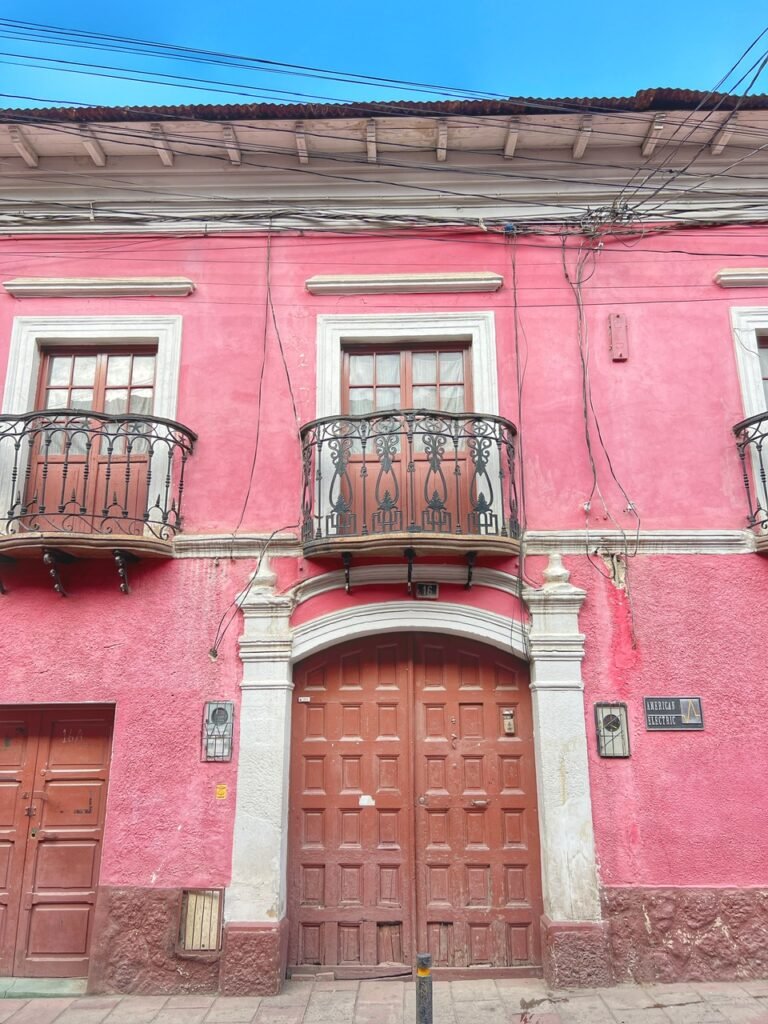
And although Sucre was opulent with its glimmering white exteriors, Potosi had loads of rich, warming colors and extravagant doors and windows. This was lovely considering its temperatures often hover around freezing at night. Its architecture is not surprising considering its silver and Spanish influence once made it one of the most wealthy cities on earth. Today after being stripped of its riches to build Spain, it is sadly one of the poorest.

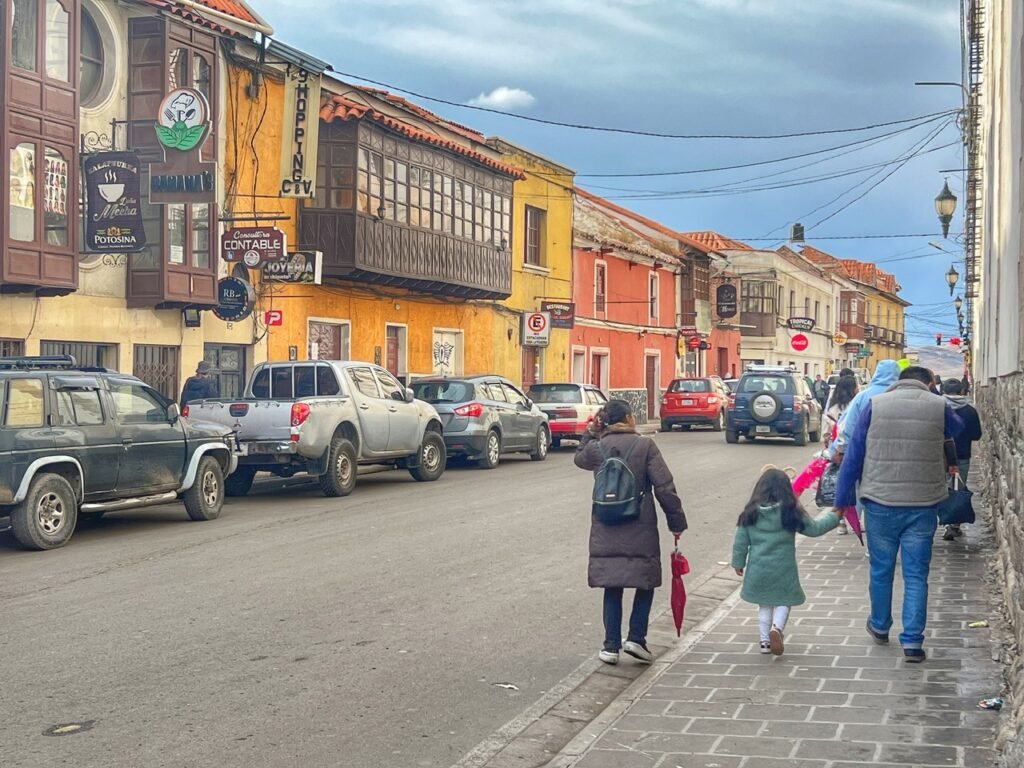
The central market and one of the main thoroughfares.
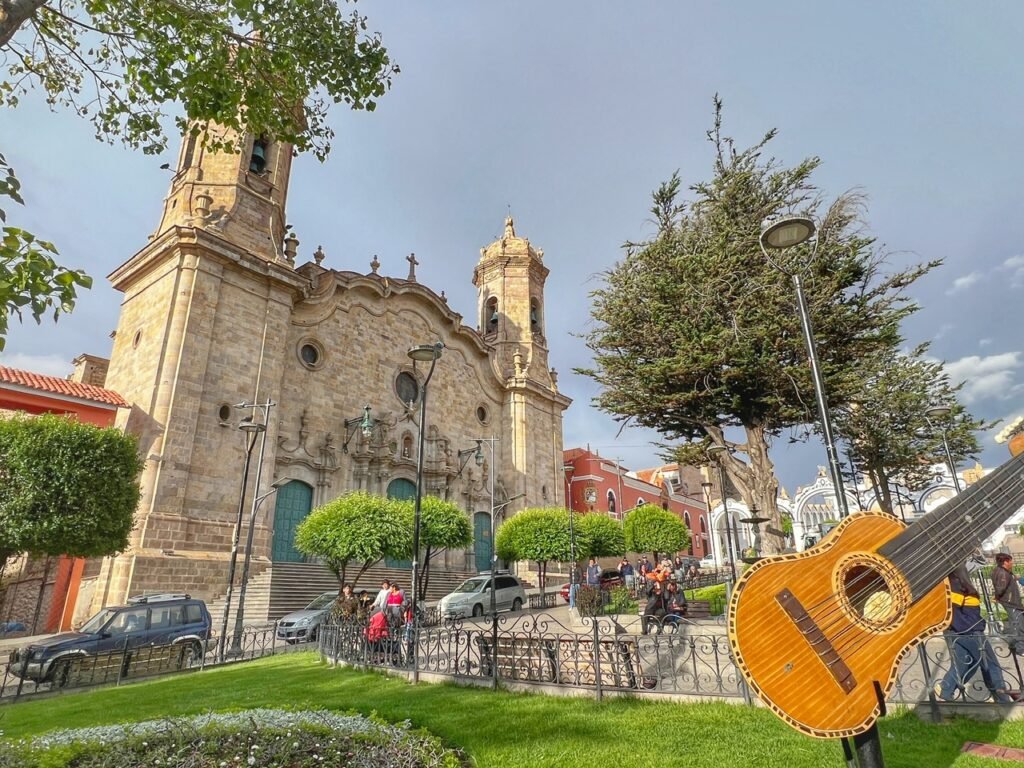
The main cathedral, and a giant guitar. The guitar had real strings and a sign that said not to play it. Ha. That’ll happen.
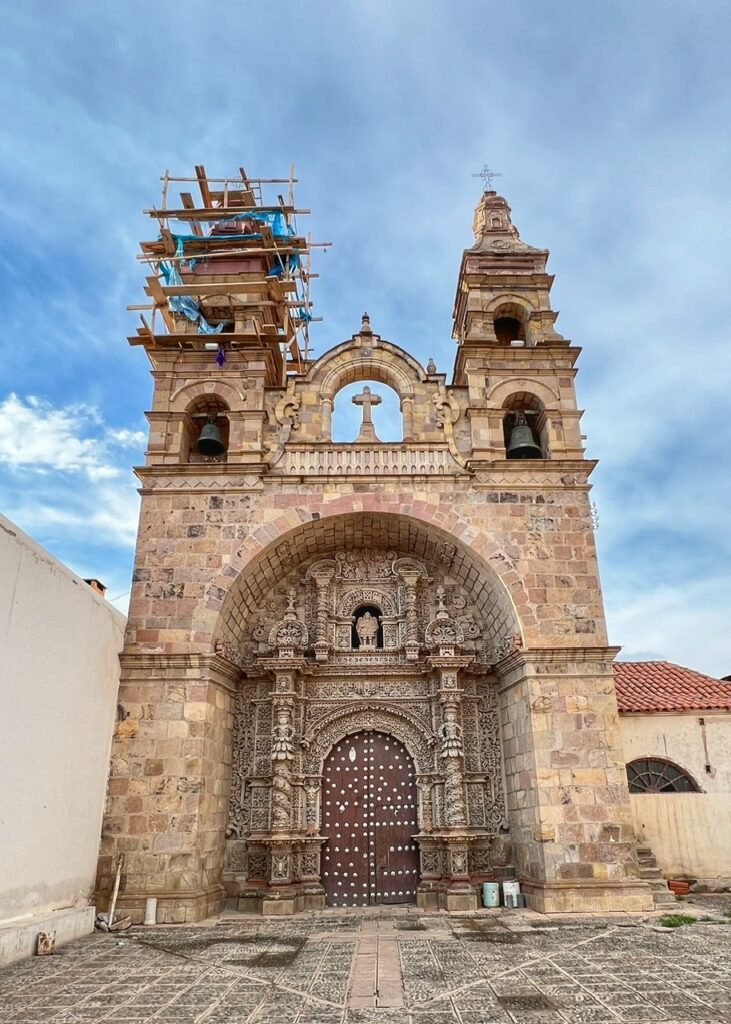
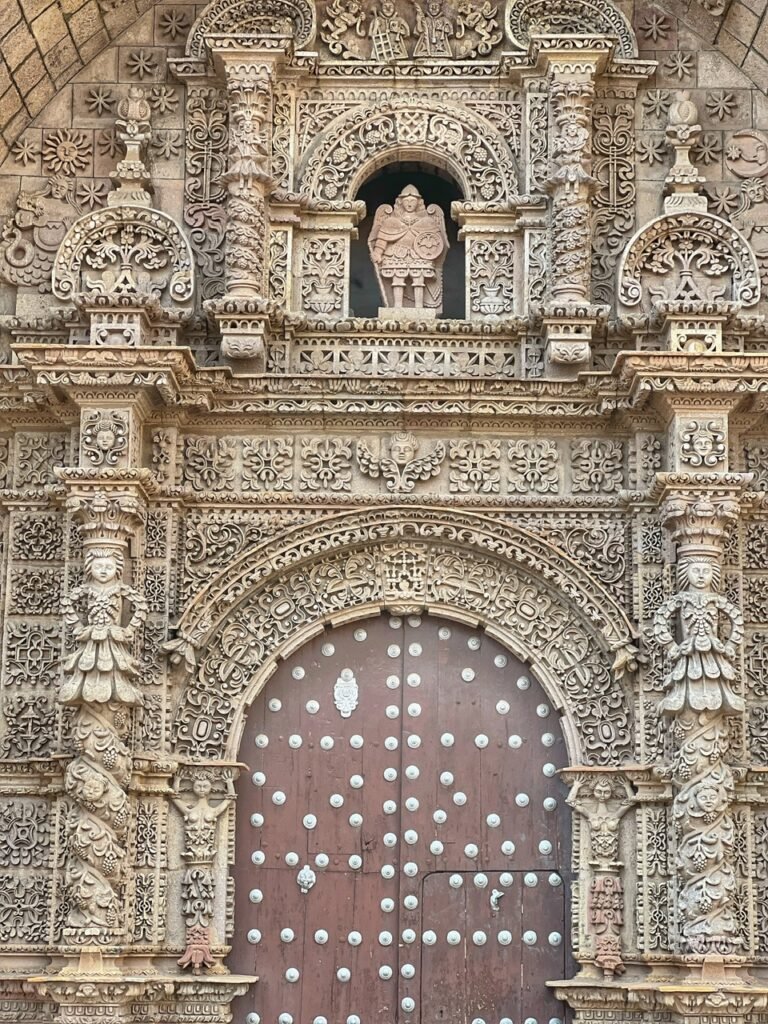
So many beautiful churches…And wow! Look at the carving on that door!


After a bit of wandering, we were starving after our transit day. Being that it was a Sunday, there was even less restaurant options in Potosi than usual. And our options were literally…hamburgers or fried chicken. Since Mandy doesn’t eat red meat, we reluctantly decided on a very large plate of grease with a side of tomate water (ketchup) for about $3 each.
When we asked for a pechuga (breast) we were informed they only had entrepiernas left. Not having heard of this cut, as the color drained from her face, Mandy quickly translated to Greg. We would be eating not only chicken, but Entre=Between and Piernas=Legs. That’s right. We’d be enjoying chicken….crotch.
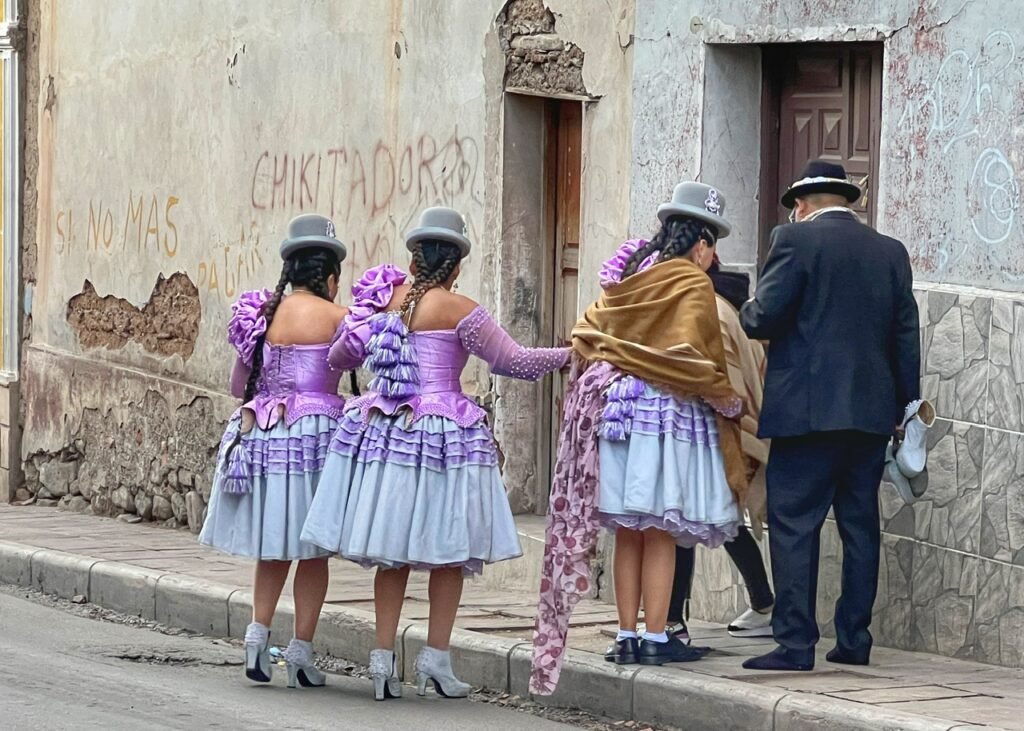
This is clearly a dress up society. Those look like comfy shoes!!
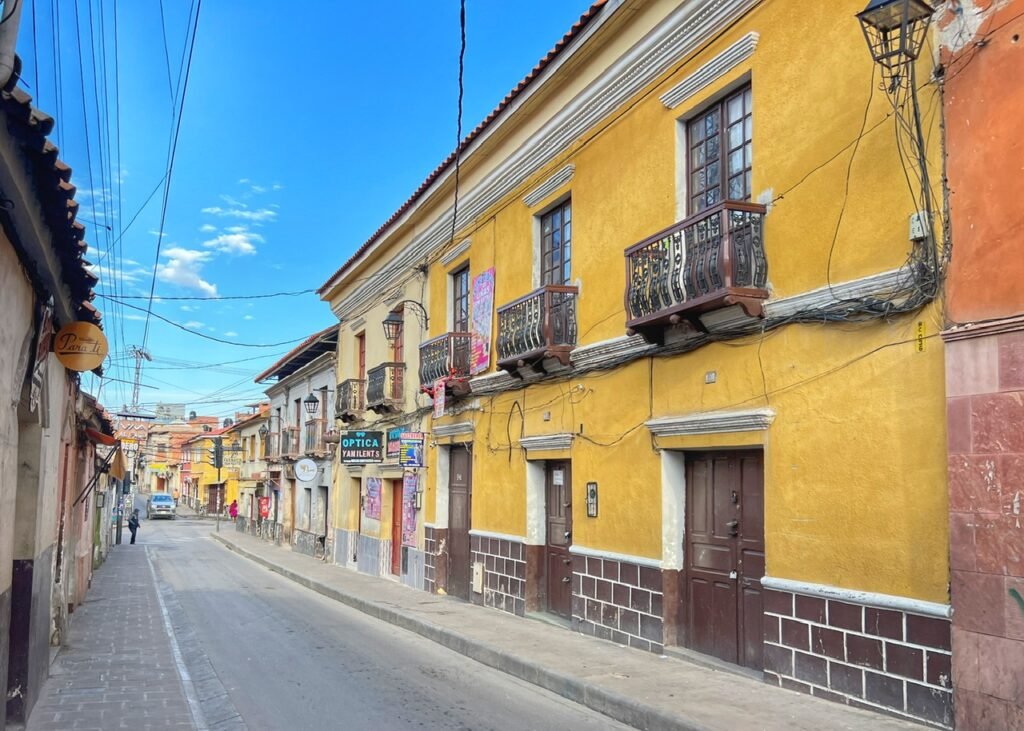
The next morning, we woke up to a temperature of 40 degrees (4 C) and brilliant sunny skies. Eager to explore before our breakfast, we stepped onto the street where our hostal was. We highly recommend Los Faroles. It was super quiet and comfortable.
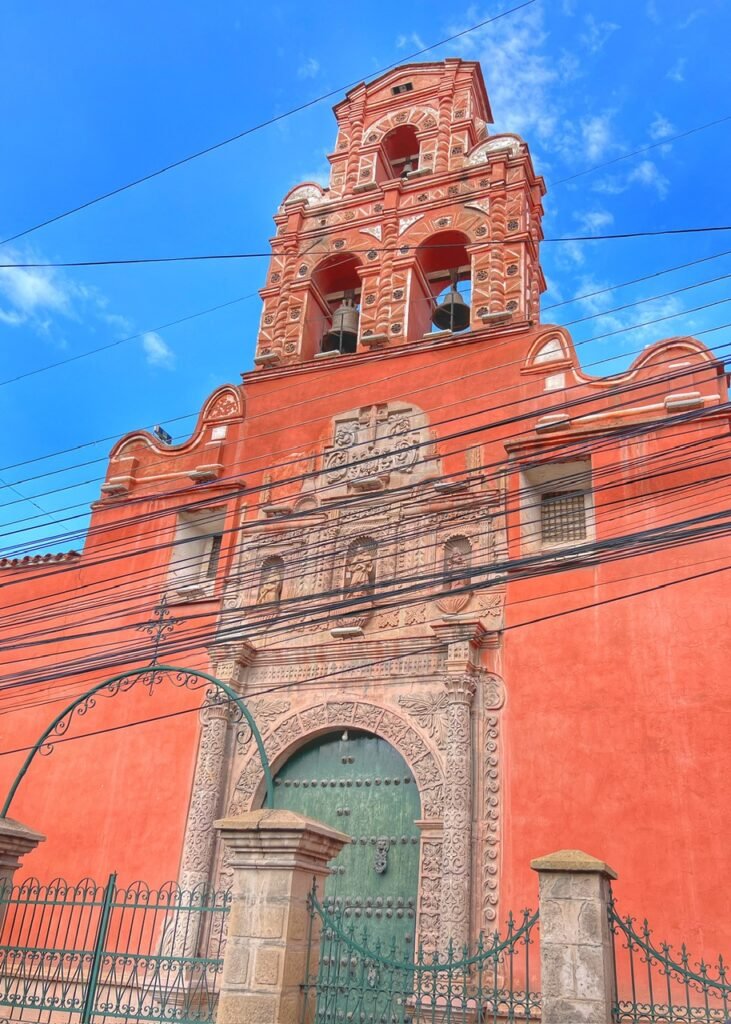

The color-popping church of Santa Theresa. We just loved the burnt orange and the covered balconies

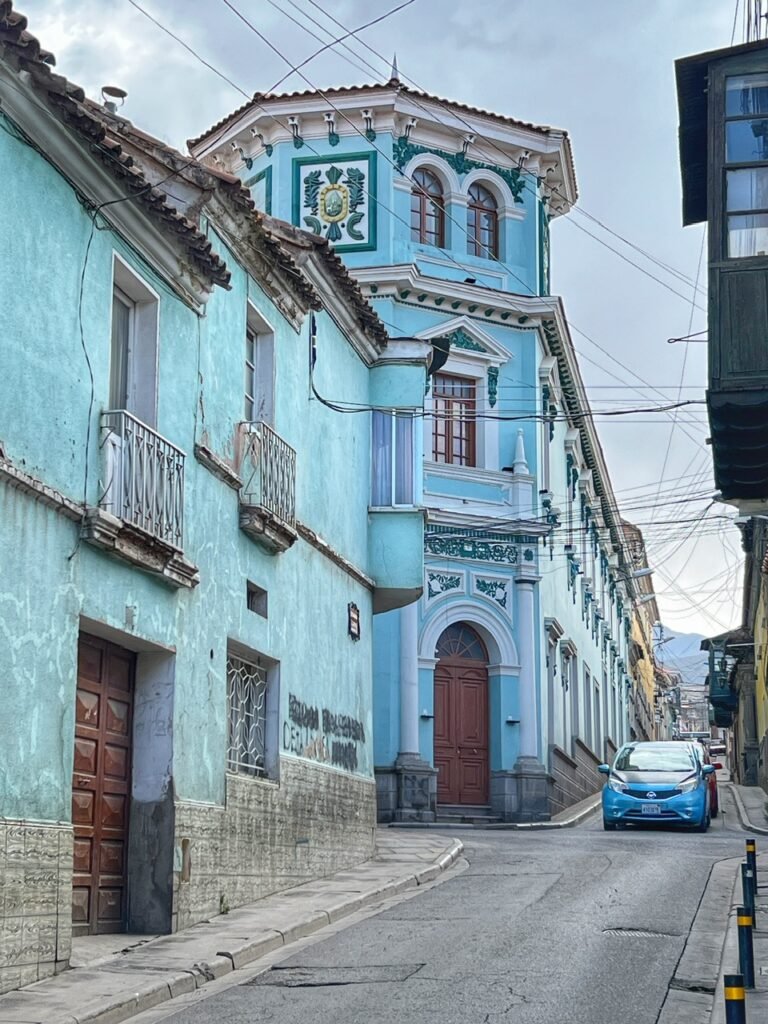
It was really much more pleasant than we expected…even a turreted corner building outfitted with a crown.
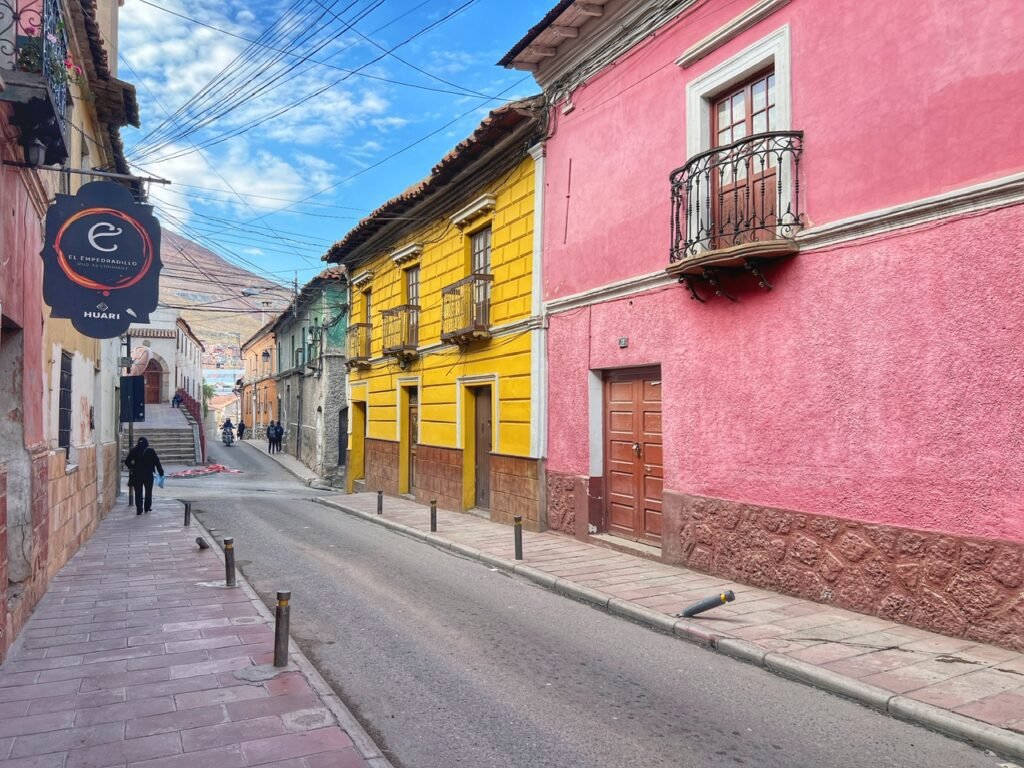

Continuing character lines the calles and a decorative church with an ornate carved facade

The early morning was the best.
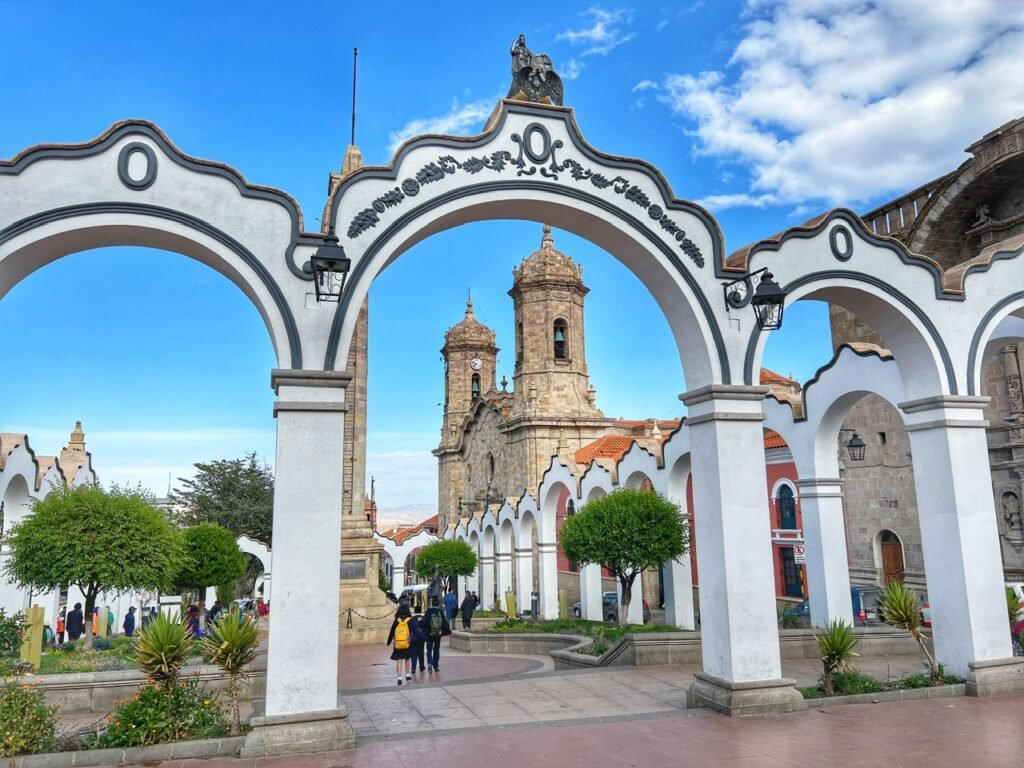
Symmetry at its finest

This city probably appreciates all the angels it can get.

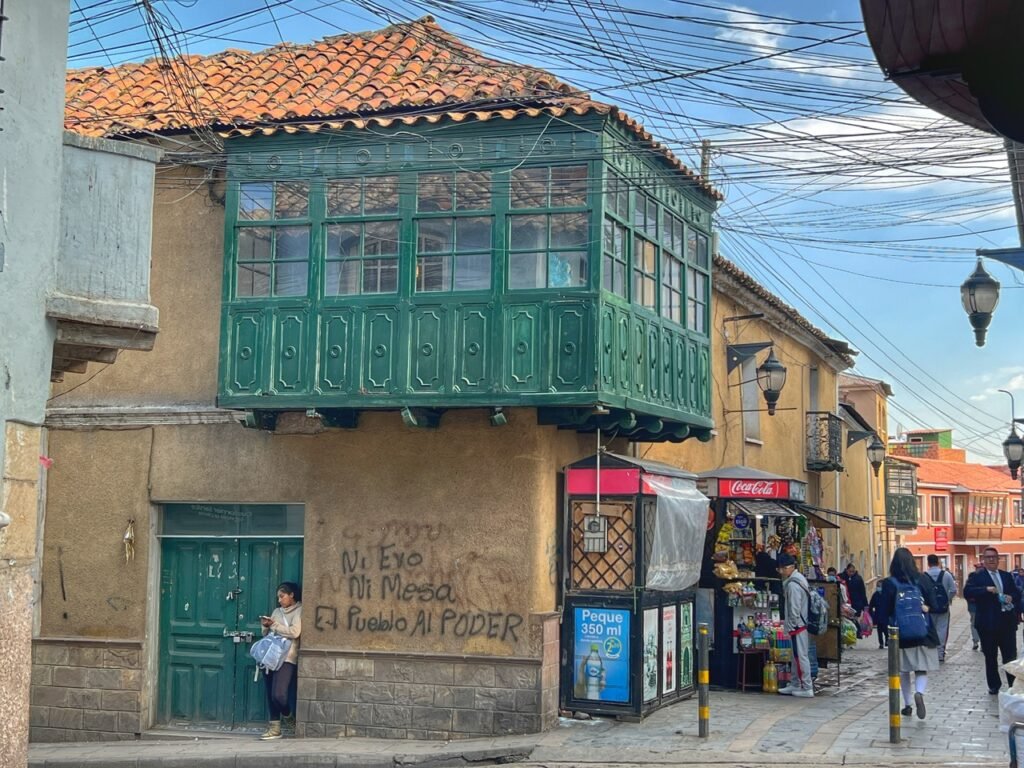
The early morning was bustling with locals heading to work and school. However, again not a single restaurant or coffee stand was open. Not sure they understand the money making potential here under its gorgeous balconies?
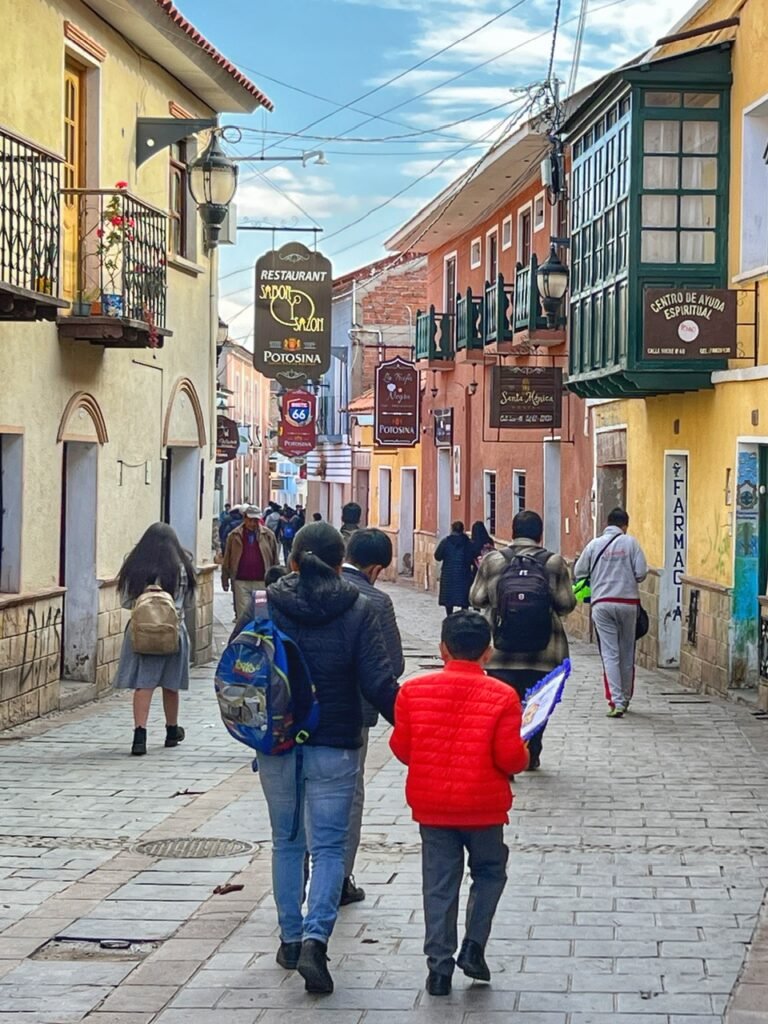
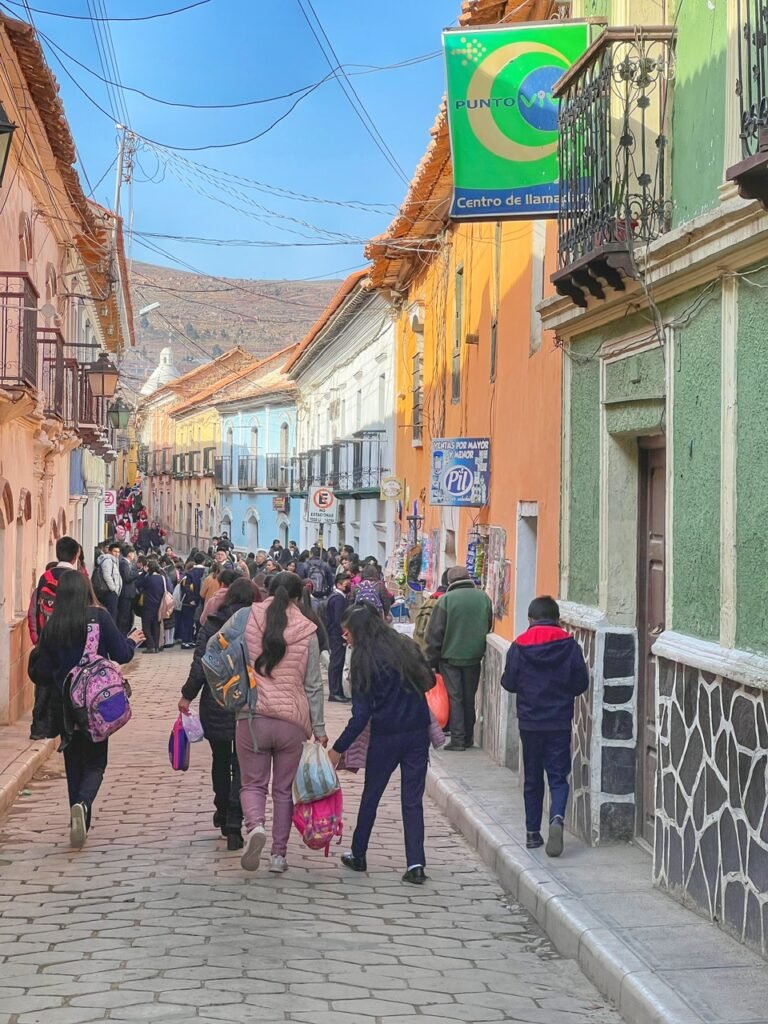
He must have a test he’s cramming for under this blue bell sky.

PTA moms gather after drop off planning their quinoa-husking dates. Or maybe its just wine and cheese…
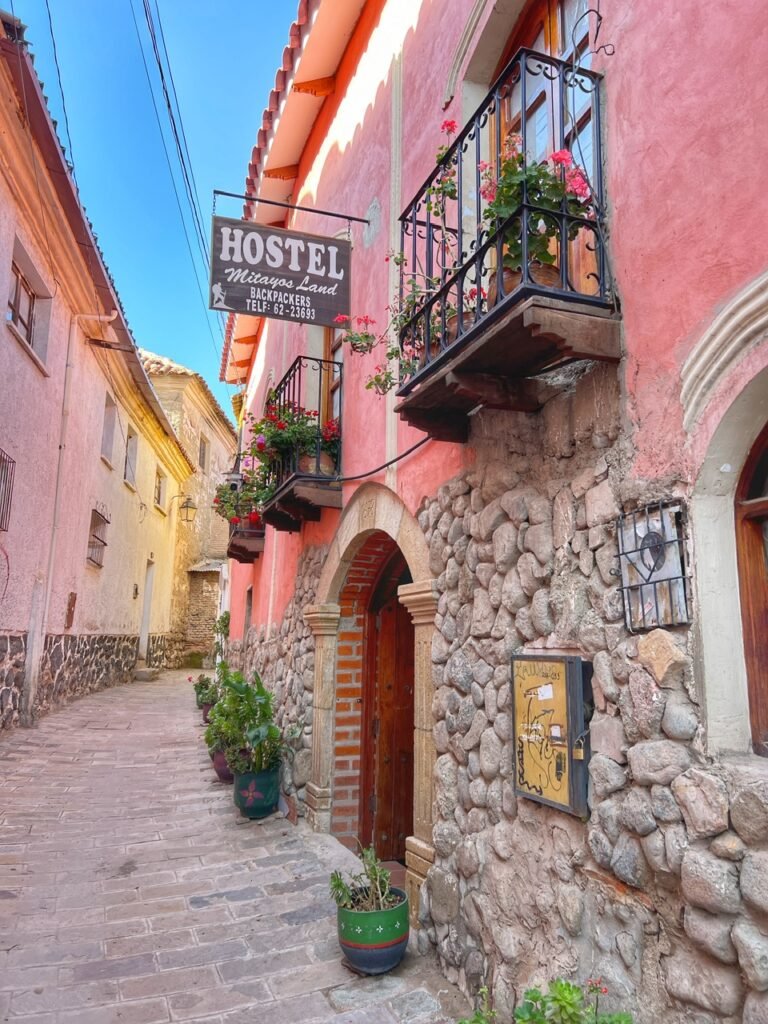
This hostel had a plaque that said it dates from the 1600s!

The color and paint often doesn’t hide the dilapidated state of the city.

What we tried to avoid at all costs…getting near the cloud of belching smoke produced by these Chinese-provided environment killers. It’s still quite common for Bolivians to wear masks. We’re wondering if it’s more for pollution than COVID and kinda think we should be doing the same.
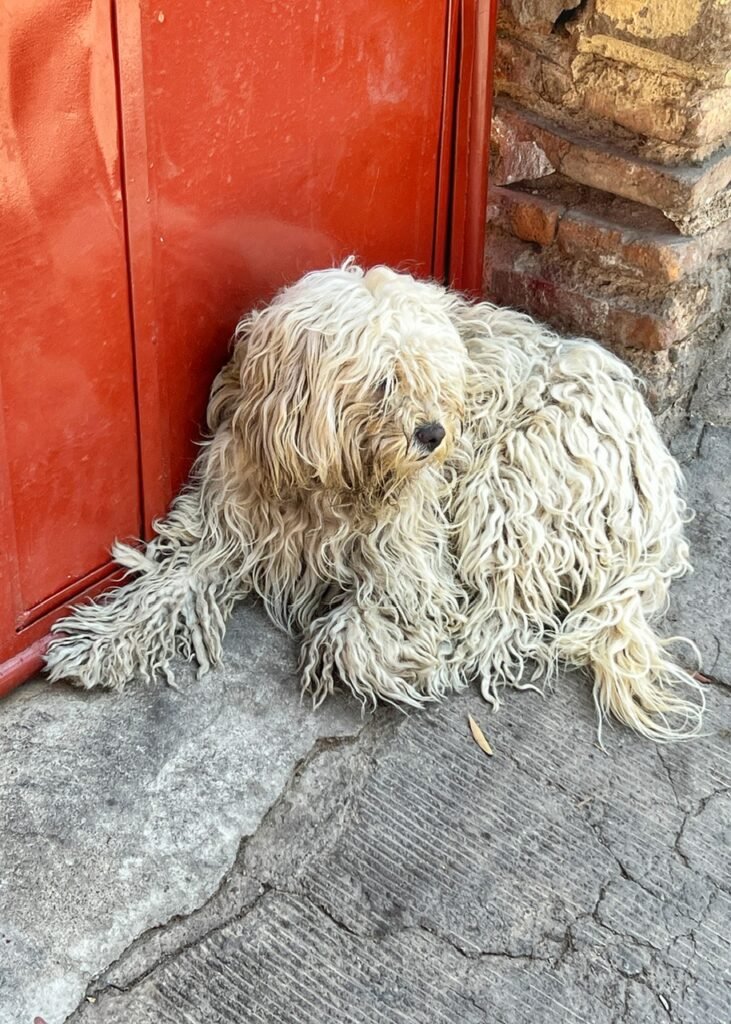
Sad doggies everywhere 😞
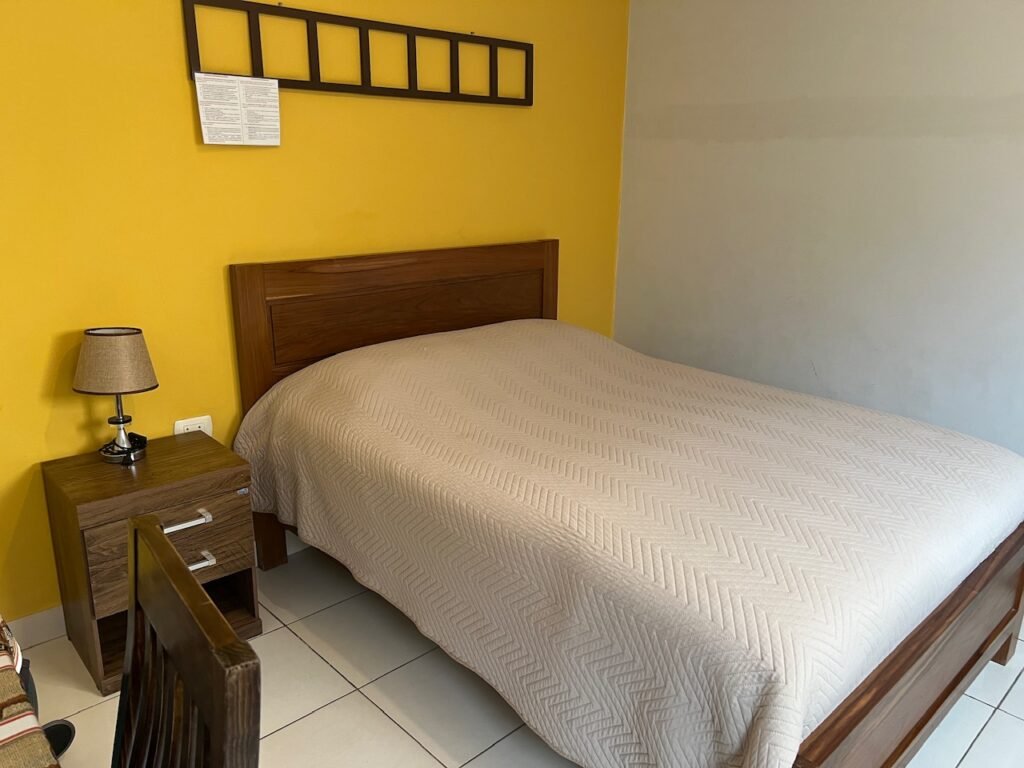
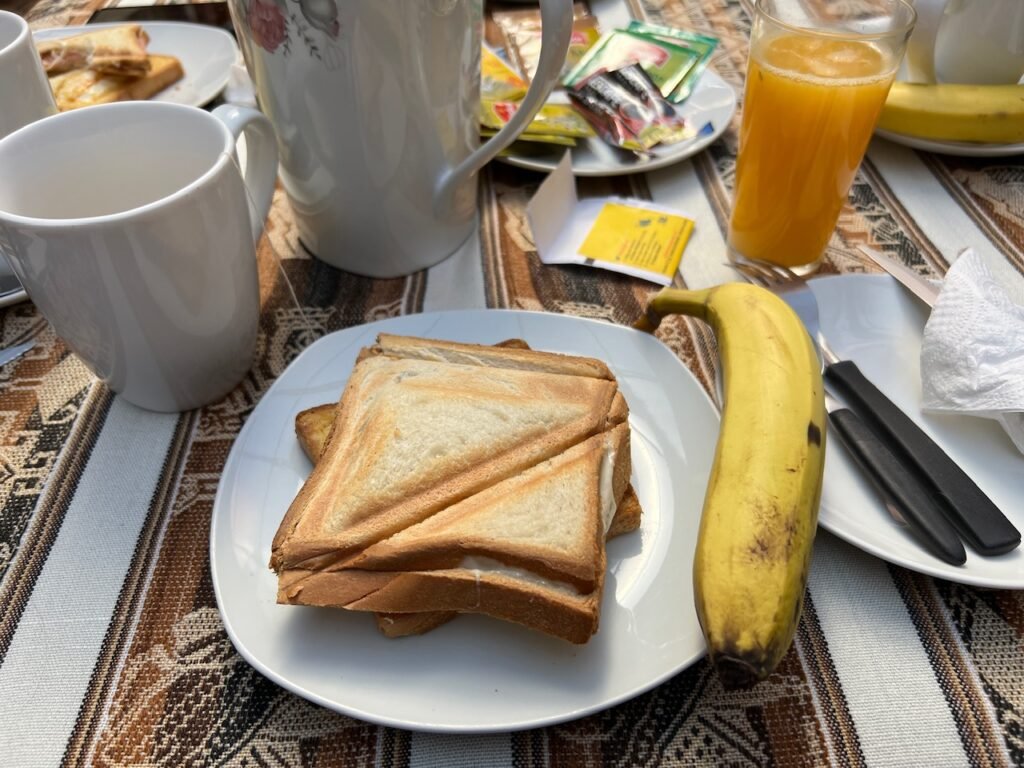
Our room at the hostal Los Faroles, which was $22 and included a decent breakfast.
Cultural Experiences
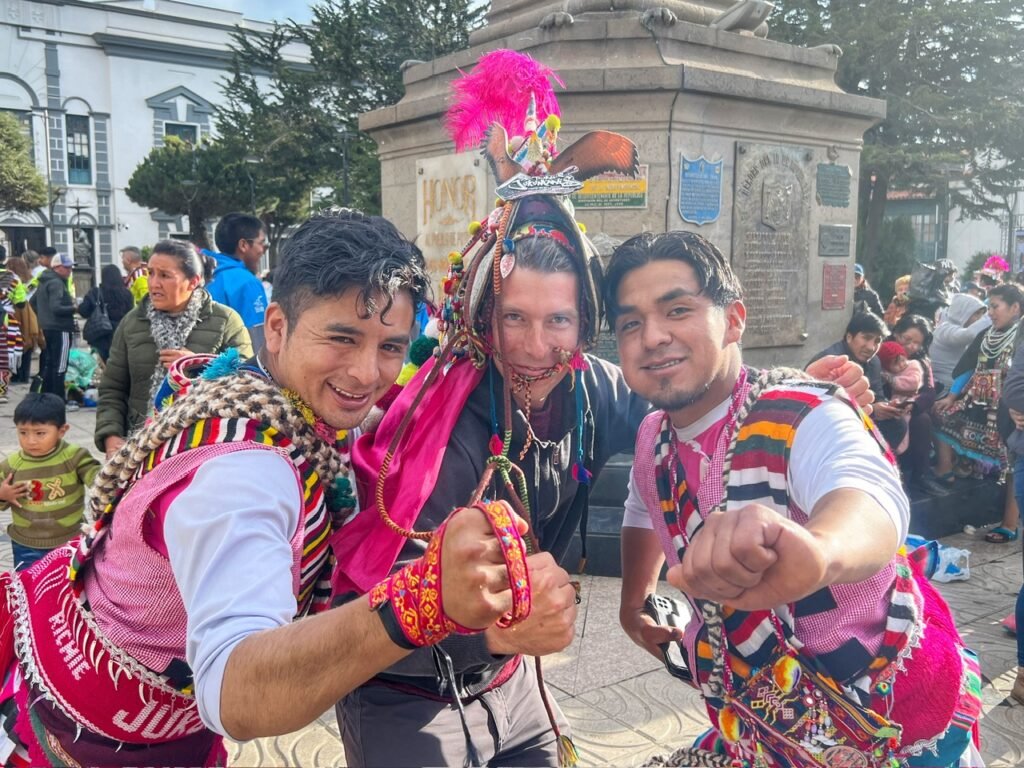
Potosi’s remote location and less touristy appeal offers a chance to immerse yourself in the true essence of Bolivian culture. On the Sunday we arrived, we even got lucky enough to stumble on a festival which was wrapping up. While there, we got dressed up, and offered beer, by some local performers. Mandy loves to dress up so she was totally game, but Greg had to be tortured into the spotlight just a bit. He looks like he’s having fun at least 😉
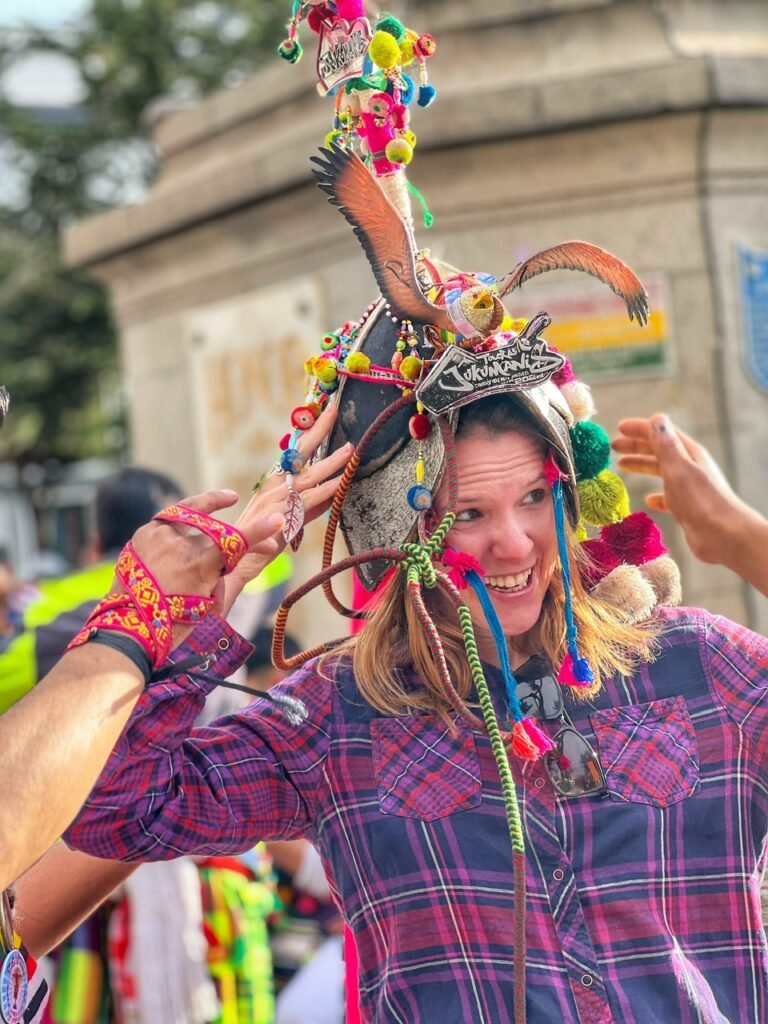
What do you think of her new hat?!
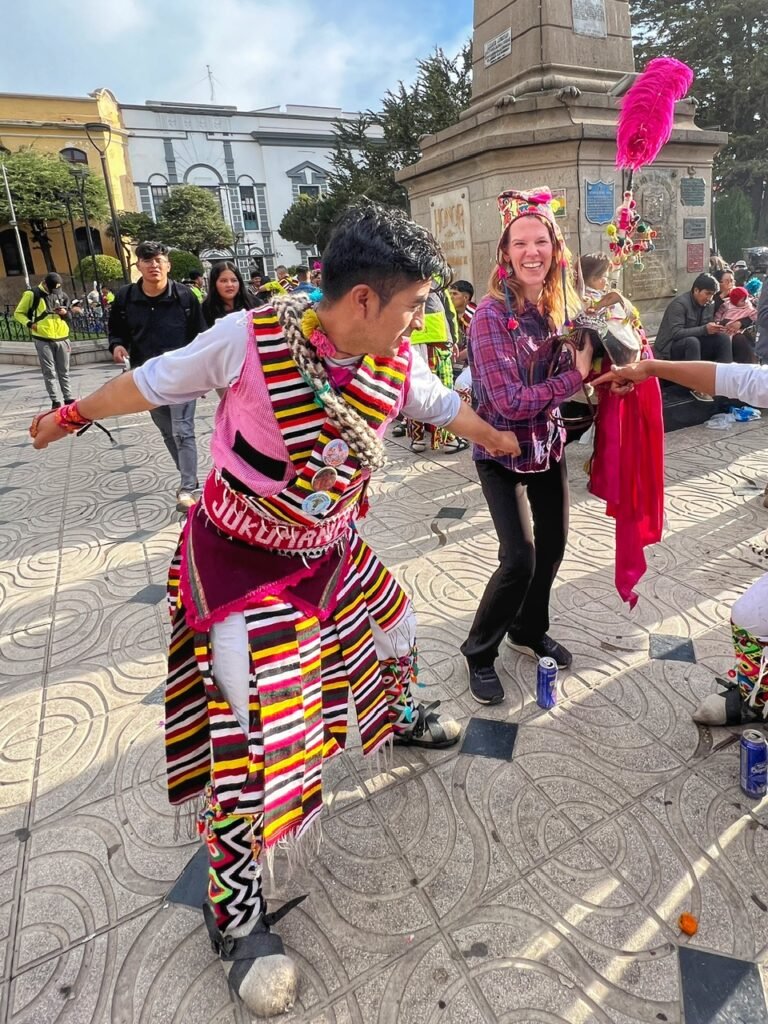
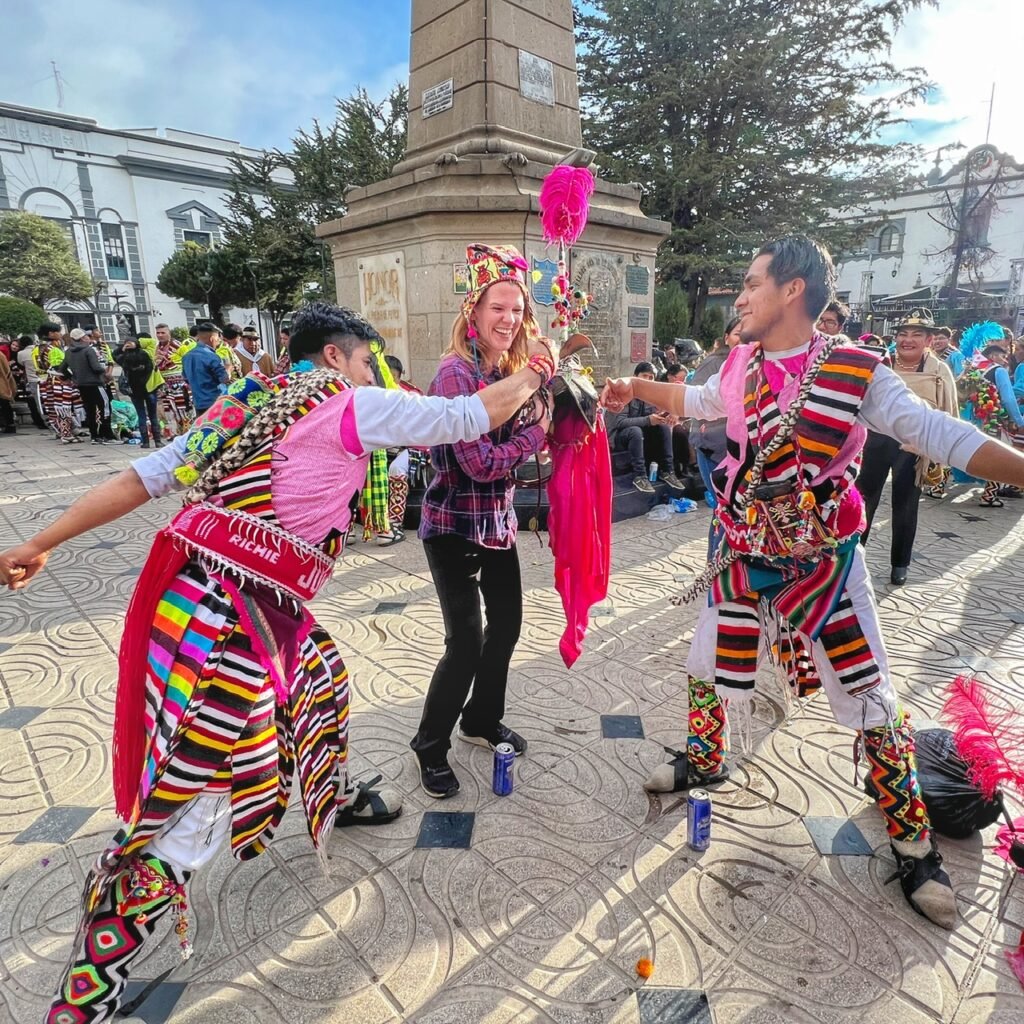
Mandy, giggling, and having no idea what was going on. Especially when the two guys started fake punching her, but seemingly just flirting.
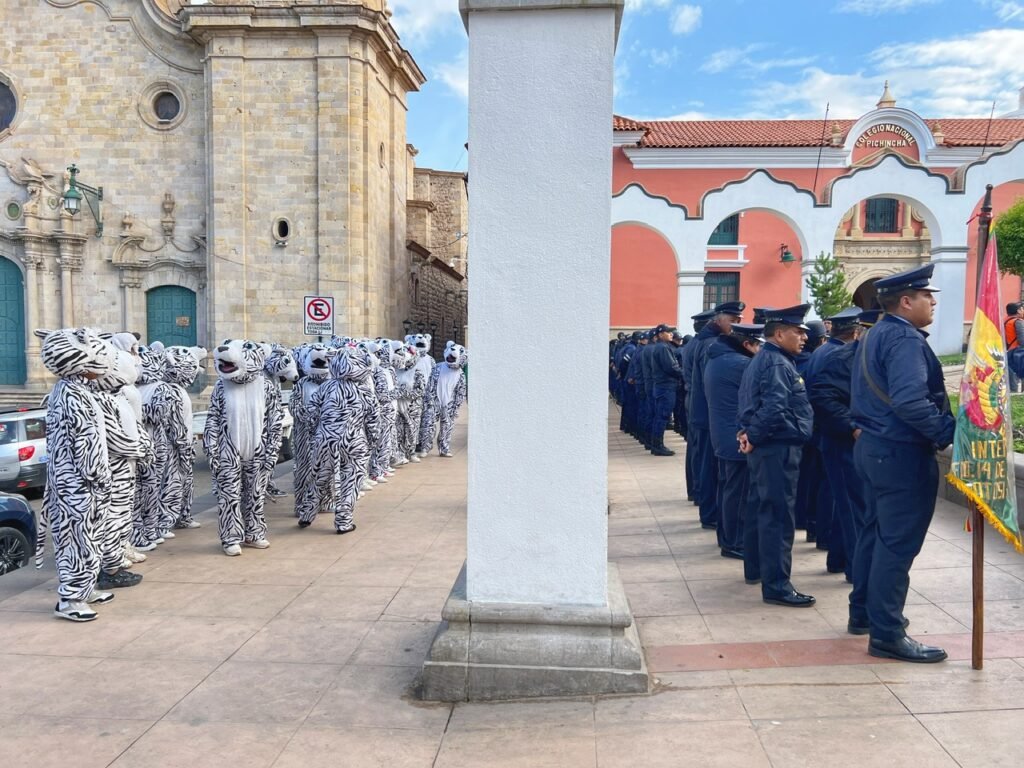
The next morning at 7:30 we again stumbled upon some sort of military procession, which included a bizarre pride of…mountain lions? We have no idea what they were doing there but they were quite a hilarious contrast amongst the very official Bolivian police force. 🤣
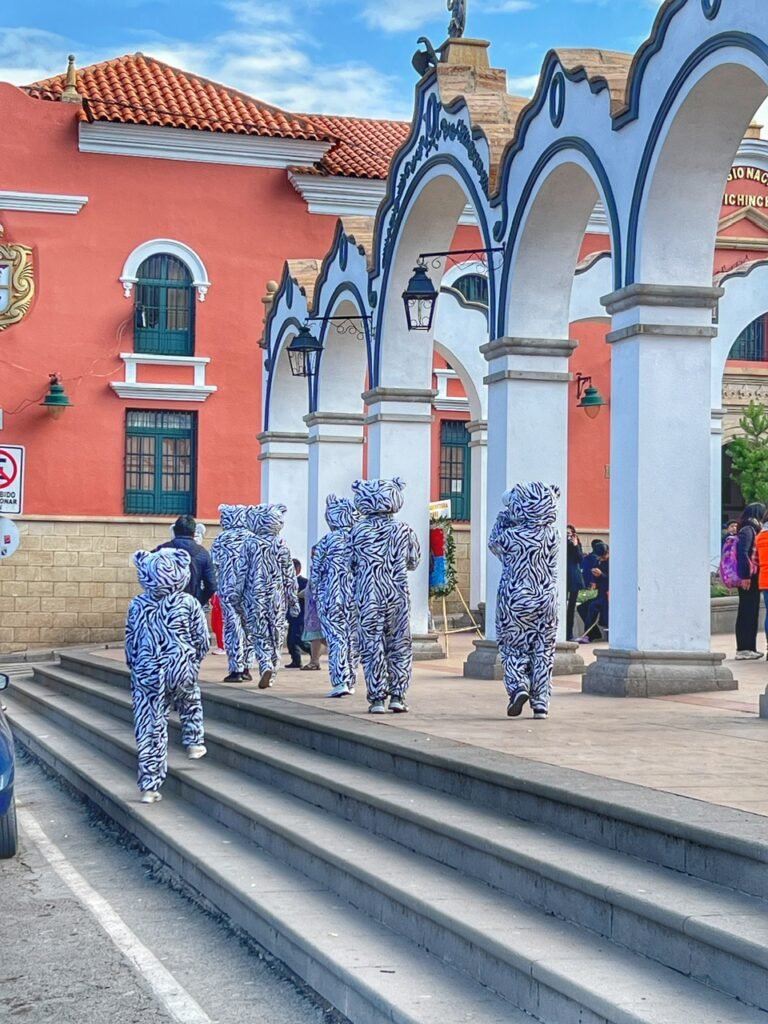

We followed the trail of tiger, mountain lion-ish tails into a square, while they stood around looking for catnip. We felt like we were in a cartoon, and again had no idea what was going on. But it was really funny.


